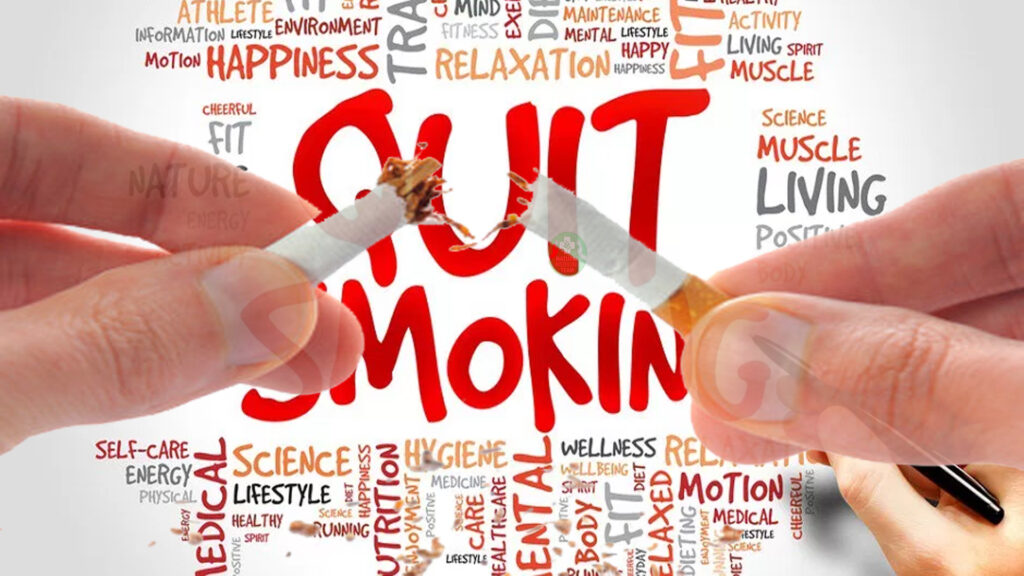How to Quit Smoking : 7 Quick ways

Smoking is a habit that not only harms your health but also affects the well-being of those around you. Quitting smoking is one of the most important steps you can take to improve your overall quality of life.
In this guide, we will discuss how to quit smoking and highlight the role of Prayas Rehab in Dehradun in helping individuals overcome this addiction.
Why Quit Smoking?
Smoking affects nearly every organ in the body and is a leading cause of preventable diseases. The harmful chemicals in tobacco can lead to conditions such as:
- Lung cancer
- Chronic obstructive pulmonary disease (COPD)
- Heart disease
- Stroke
Beyond health risks, smoking can drain your finances and negatively impact your social life. Recognizing the reasons to quit is the first step toward breaking free from this habit.
7 Quick ways to Quit smoking
1. Set a Quit Date
Choose a specific date to quit smoking, ideally within the next two weeks. This gives you time to prepare mentally and emotionally for the change. Mark the date on your calendar and commit to it. Getting rid of cigarettes, lighters, and ashtrays from your environment can also help reinforce your decision.
2. Identify Triggers
Understand what makes you want to smoke. These could be specific situations, emotions, or routines, such as stress, social situations, or after meals. Once you identify your triggers, you can work on strategies to avoid or manage them. For example, if stress is a trigger, try relaxation techniques or physical activity instead of smoking.
3. Use Nicotine Replacement Therapy (NRT)
Nicotine replacement products, such as patches, gum, lozenges, inhalers, or nasal sprays, can help reduce withdrawal symptoms and cravings. NRT delivers a controlled dose of nicotine, easing your transition to a smoke-free life while you work on breaking the habit.
4. Seek Professional Help
Professional guidance can significantly increase your chances of quitting. Counselling sessions, behavioural therapy, and rehabilitation programs can provide the tools and support you need.
Prayas Rehab in Dehradun offers specialized services to help individuals quit smoking. Their team of experts provides personalized care, ensuring that every individual receives the support necessary for a successful recovery.
5. Stay Active
Physical activity helps manage stress, improve your mood, and reduce cravings. Try activities like walking, swimming, or yoga. Staying active will not only help you cope with withdrawal symptoms but also improve your overall health as you quit smoking.
6. Manage Cravings
Cravings for cigarettes can be intense but usually last only a few minutes. When you feel a craving coming on, try to distract yourself with activities such as drinking water, chewing gum, or deep breathing. You can also try taking a walk, calling a friend, or doing something that keeps your mind off the urge to smoke.
7. Celebrate Milestones
Celebrate your achievements along the way, whether it’s one day, one week, or one month without smoking. Recognize your progress, and reward yourself with something meaningful. This will help reinforce your commitment to staying smoke-free.
By following these 7 steps, you’ll be well on your way to quitting smoking and improving your health. Stay determined, and remember that each day without smoking is a step toward a healthier future.

How Prayas Rehab in Dehradun Can Help
Located in the serene environment of Dehradun, Prayas Rehab is a leading centre dedicated to helping individuals overcome smoking addiction. Their holistic approach combines:
- Behavioural therapy: To address the psychological aspects of addiction
- Customized treatment plans: Tailored to each individual’s needs
- Stress management techniques: Such as yoga and meditation
- Nutritional guidance: To restore physical health
The compassionate and professional staff at Prayas Rehab ensure that clients receive the care and attention needed for a successful recovery.
Coping with Withdrawal Symptoms
Withdrawal symptoms are temporary but can be challenging. Here’s how to manage common symptoms:
- Cravings: Distract yourself with a new activity or drink a glass of water.
- Irritability: Practice deep breathing or take a break from stressful situations.
- Difficulty Concentrating: Break tasks into smaller steps and take short breaks as needed.
- Fatigue: Rest when necessary and focus on maintaining a balanced diet.
Remember, withdrawal symptoms peak within the first week and gradually subside.
Government programs and schemes
The government actively supports individuals in learning how to quit smoking through various schemes and campaigns. Programs like the National Tobacco Control Program (NTCP) in India and the CDC’s Tips From Former Smokers in the USA aim to raise awareness about the health risks of smoking.
These initiatives provide resources such as quitlines, counselling, and nicotine replacement therapies to help people understand how to quit smoking effectively. Free workshops and online materials educate individuals on managing cravings and withdrawal symptoms. By promoting a smoke-free environment, these campaigns empower smokers to lead healthier lives and successfully quit for good.
The Rewards of a Smoke-Free Life
Quitting smoking is a journey that requires determination and persistence, but the rewards are worth the effort. By learning how to quit smoking, you can reclaim control over your health and enjoy a brighter, smoke-free future.
With each passing day, you’ll experience improvements in your physical and mental well-being, strengthen your relationships, and inspire others to follow your lead. By following the strategies outlined in this guide and seeking professional help from centres like Prayas Rehab in Dehradun, you can overcome smoking addiction and embark on a healthier, smoke-free life. Remember, every step you take brings you closer to a brighter future.
Here’s an FAQ focused on the keyword “how to quit smoking” to help individuals who are looking for guidance:
FAQ: How to Quit Smoking
1. How quit smoking successfully?
To quit smoking successfully, start by creating a plan. Identify your reasons for quitting, set a quit date, and seek support from friends, family, or professionals. Use resources such as counselling, nicotine replacement therapy (NRT), or prescription medications if needed.
2. How quit smoking without gaining weight?
To avoid weight gain when quitting:
- Eat a healthy, balanced diet with plenty of fruits, vegetables, and lean proteins.
- Stay hydrated to curb cravings.
- Exercise regularly to manage weight and reduce stress.
- Keep low-calorie snacks handy for cravings.
3. How quit smoking naturally?
Some natural approaches to quitting smoking include:
- Using herbal remedies like lobelia or ginseng to reduce cravings.
- Practising deep breathing, meditation, or yoga to manage stress.
- Distracting yourself with hobbies or physical activities.
- Gradually reducing the number of cigarettes you smoke each day.
4. How quit smoking cold turkey?
To quit smoking cold turkey:
- Prepare mentally for withdrawal symptoms.
- Stay committed to your decision to quit.
- Remove all cigarettes, lighters, and ashtrays from your environment.
- Focus on one day at a time and use distractions to cope with cravings.
5. How to quit smoking with professional help?
Professional help includes:
- Consult a doctor for advice on medications like bupropion or varenicline.
- Joining a support group or therapy program.
- Calling a quitline (e.g., 1-800-QUIT-NOW in the U.S.).
- Using structured programs like cognitive-behavioural therapy (CBT) designed for smokers.
6. How quit smoking during stressful times?
- Use stress management techniques like deep breathing, progressive muscle relaxation, or mindfulness meditation.
- Seek support from friends or counsellors to share your feelings.
- Focus on the long-term benefits of quitting, such as improved health and financial savings.
7. How quit smoking if I’ve failed before?
- Learn from past attempts and identify what triggered a relapse.
- Try new methods, such as combining medication with behavioural therapy.
- Keep a positive mindset and remind yourself that quitting may take several tries.
- Celebrate small victories and progress.
8. How quit smoking while pregnant?
- Talk to your healthcare provider about safe methods to quit.
- Avoid exposure to secondhand smoke and triggers.
- Consider using non-pharmacological approaches like counselling.
- Focus on the health benefits for you and your baby.